Japan Sendai Mission 日本仙台伝道部
Teruya Jidai ('74-'77) 照屋時代帰還宣教師
RM Site-同窓生サイト

Aomori-ken Locations
Aomori, Hachinohe, Hirosaki, Misawa, Towada
Aomori
 This northernmost branch meetinghouse is about 20-minutes walk from the Aomori eki (map), (street view) at Nagashima 4-22-23 and was completed in 1984. An elevator was added later, and in 2018, the branch celebrated 50 years since its founding in 1968. (Picture taken 2019.)
This northernmost branch meetinghouse is about 20-minutes walk from the Aomori eki (map), (street view) at Nagashima 4-22-23 and was completed in 1984. An elevator was added later, and in 2018, the branch celebrated 50 years since its founding in 1968. (Picture taken 2019.) Historic Aomori
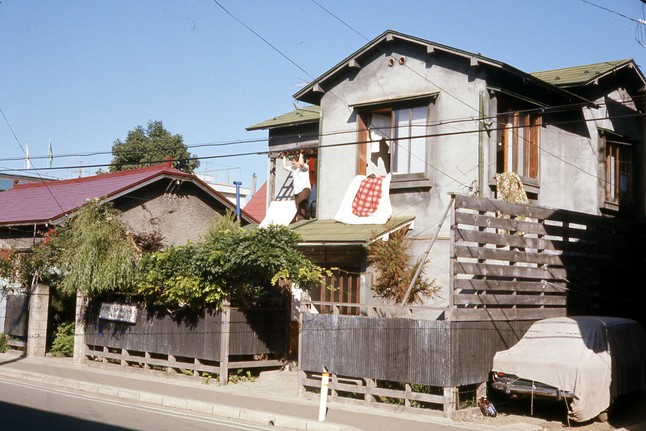 August 1974 photo of the house that comprised Aomori's combined meetinghouse/elder's quarters. (photo courtesy: John Ericson) John says Elder Lefler is visible practicing the familiar futon drying/sun disinfecting activity. I'm hoping to get the address of this location-if you can assist, yoroshiku.
August 1974 photo of the house that comprised Aomori's combined meetinghouse/elder's quarters. (photo courtesy: John Ericson) John says Elder Lefler is visible practicing the familiar futon drying/sun disinfecting activity. I'm hoping to get the address of this location-if you can assist, yoroshiku.
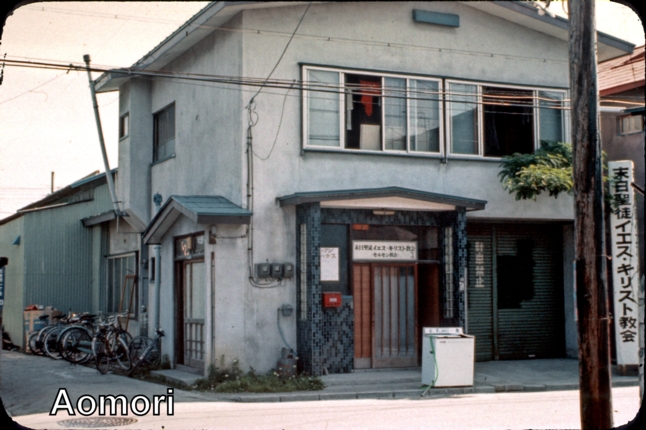
Kitakanazawa 1-5-15 (map) (street view) was used as the combined elders quarters and meetinghouse location for about ten years until the built building was completed in 1984. This building still exists but has been remodeled and appears shuttered. Another missionary apartment existed in 'Aomori East.'
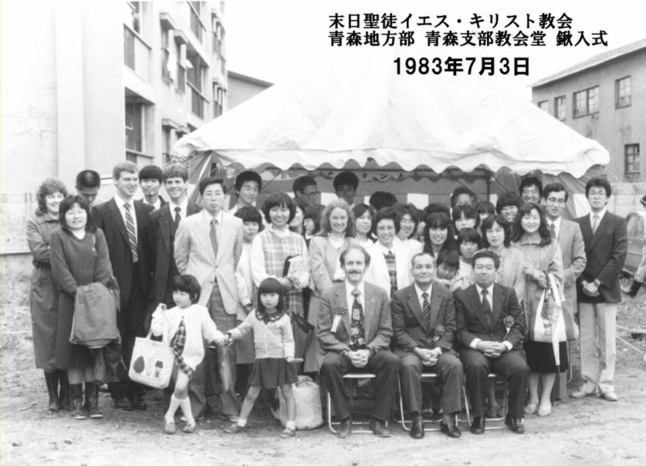
Groundbreaking ceremony picture for the current Nagashima building. At the time, our own (moustached) Ken White (and wife Lynda) were teaching English in Aomori and Ken was also serving as branch president. Seated to his left is mission president Shimabukuro and Kubota Koji from Hachinohe, who was district president at the time.
Hachinohe
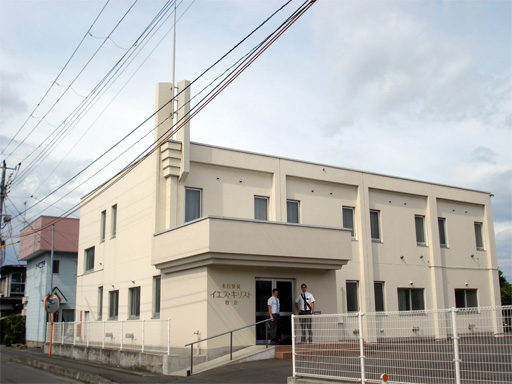 Hachinohe has had missionaries since 1968. Hachinohe's meetinghouse is located only one block from the Hon-Hachinohe (mid-city) eki (station) (map) (street view) and was dedicated 10 June 1984. This floor plan is fairly common in other areas of Japan, with the chapel on the second floor along with some classrooms, and a kitchen and more classrooms on the ground floor. Hachinohe is a port and industrial city of about 250,000. The branch celebrated their 40th year in 2008 and their 50th anniversary in 2018 - here are articles and pictures.
Hachinohe has had missionaries since 1968. Hachinohe's meetinghouse is located only one block from the Hon-Hachinohe (mid-city) eki (station) (map) (street view) and was dedicated 10 June 1984. This floor plan is fairly common in other areas of Japan, with the chapel on the second floor along with some classrooms, and a kitchen and more classrooms on the ground floor. Hachinohe is a port and industrial city of about 250,000. The branch celebrated their 40th year in 2008 and their 50th anniversary in 2018 - here are articles and pictures.
Historic Hachinohe
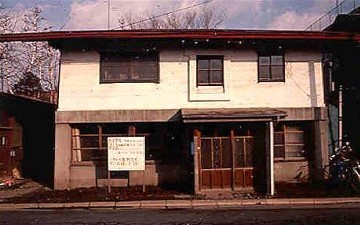 Hachinohe shibu at Kamikazushi-chou 5 (map), right off of the start of the main downtown drag at Aramachi--was the second meetinghouse established in Hachinohe, and was used in the 1970s trough April 1975. This building had unusually thick walls (>1 ft. thick). This building no longer exists.
Hachinohe shibu at Kamikazushi-chou 5 (map), right off of the start of the main downtown drag at Aramachi--was the second meetinghouse established in Hachinohe, and was used in the 1970s trough April 1975. This building had unusually thick walls (>1 ft. thick). This building no longer exists.
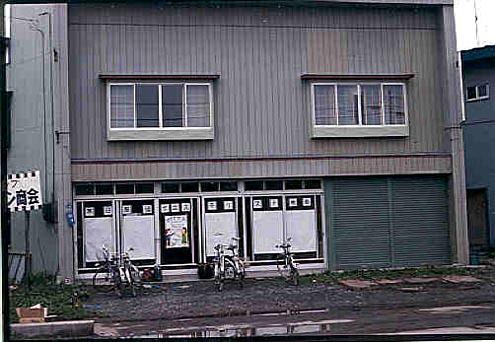
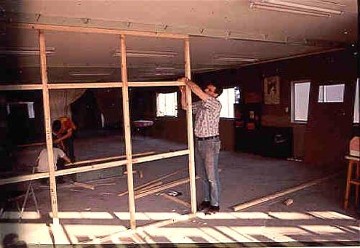
.jpg)
Hirosaki
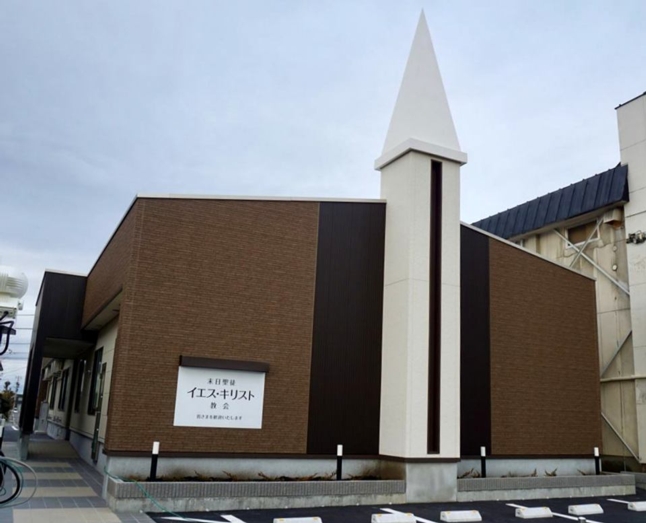
The mission's newest meetinghouse at Hirosaki (map) (street view) located at Jōtōchūō 3-2-10, about a 10-minute walk east behind the eki. It was completed on schedule in less than six months, with the first Sunday meetings held on 01 Jan 2017 and dedication on 30 Apr 2017. A converted storefront building that was used as the previous meetinghouse since 1991 was bulldozed to make way for the new chapel. This is one of the smallest church-built buildings in the mission, but it is surely a joy and a blessing for the faithful members there and for missionaries who served in Hirosaki. Hirosaki is famous for its large park and castle grounds and sakura matsuri (cherry blossom festival) held there every year in late April. Aomori-ken is famous for its delicious apples; many orchards can be found in the area between Hirosaki and the city of Aomori.
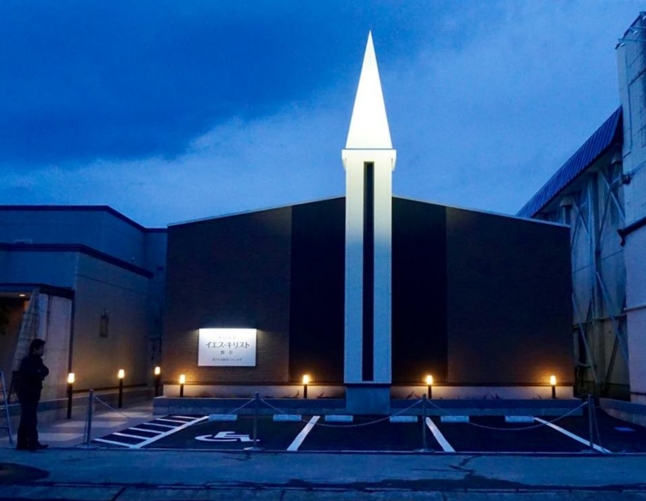
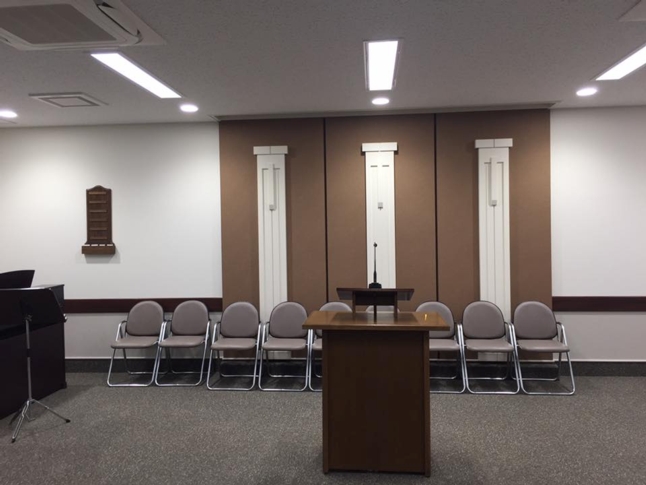
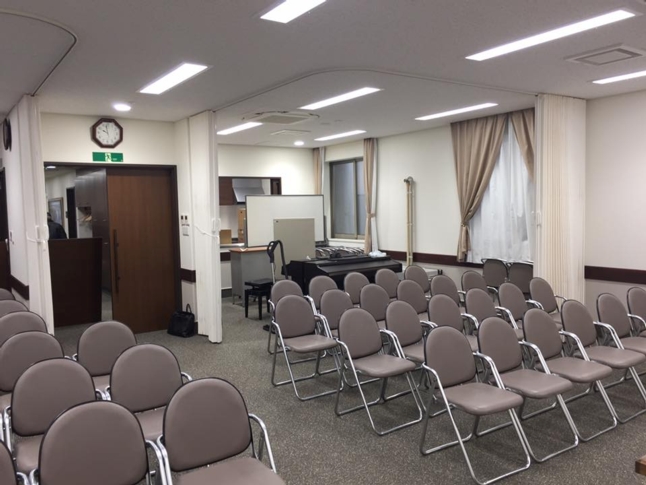
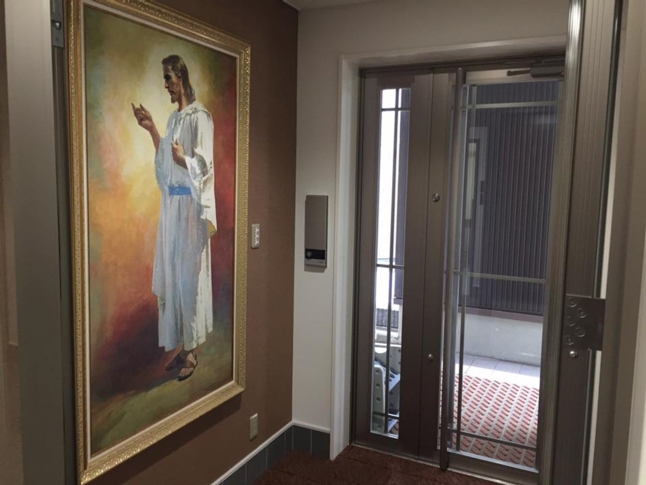
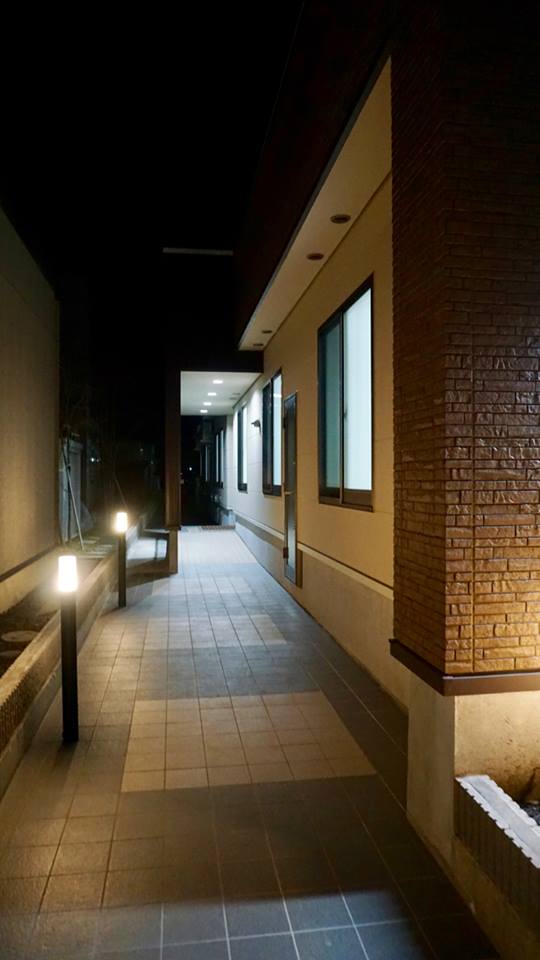
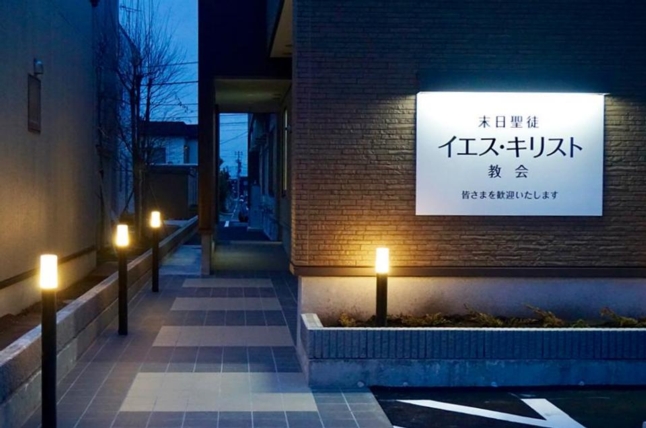
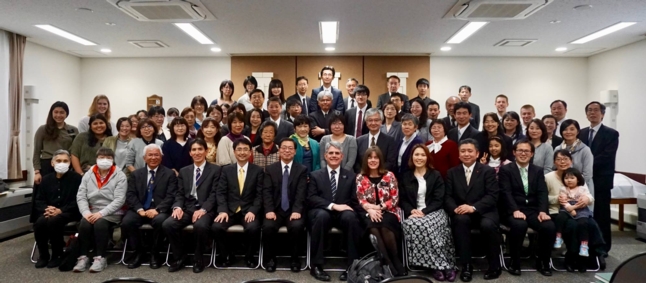
This commemorative picture was taken 30 Apr 2017 in conjuction the new Hirosaki meetinghouse dedication, which was done by Elder Otahara, Area Seventy. President Jeffrey Smith and Sister Karen Smith, Sendai Mission Leaders at the time, are in the center.
Historic Hirosaki
 Hirosaki's first combination meetinghouse / missionary quarters was located at Wakato Cho 24-1, not far from Hirosaki Castle grounds, and was used from 1970 through 1986. Photo courtesy of Stuart McHardy (78-80), who noted it was known among missionaries as the 'samurai house.' The samurai house is no longer standing.
Hirosaki's first combination meetinghouse / missionary quarters was located at Wakato Cho 24-1, not far from Hirosaki Castle grounds, and was used from 1970 through 1986. Photo courtesy of Stuart McHardy (78-80), who noted it was known among missionaries as the 'samurai house.' The samurai house is no longer standing. 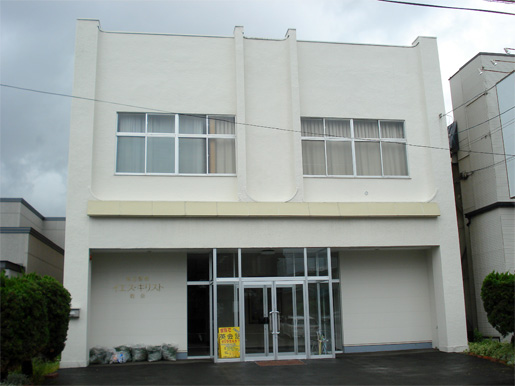
Misawa
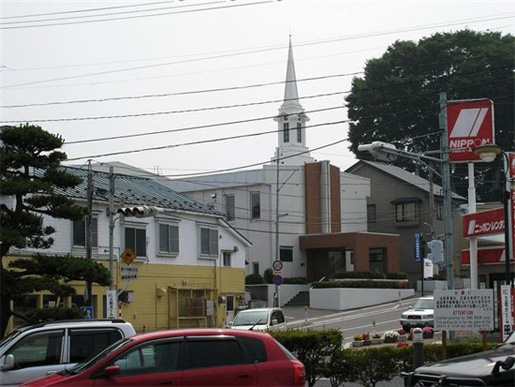
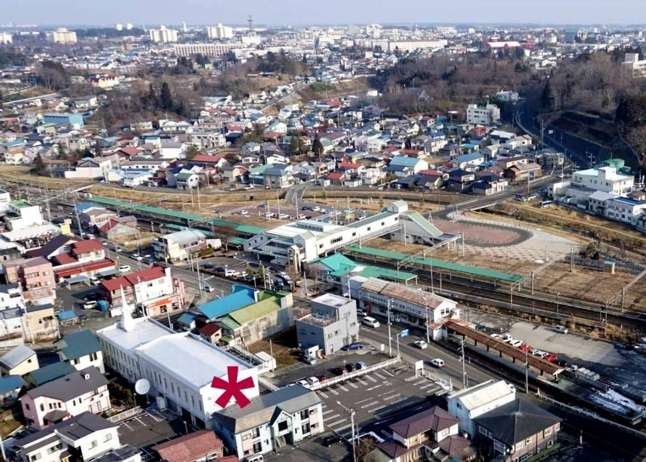
Towada
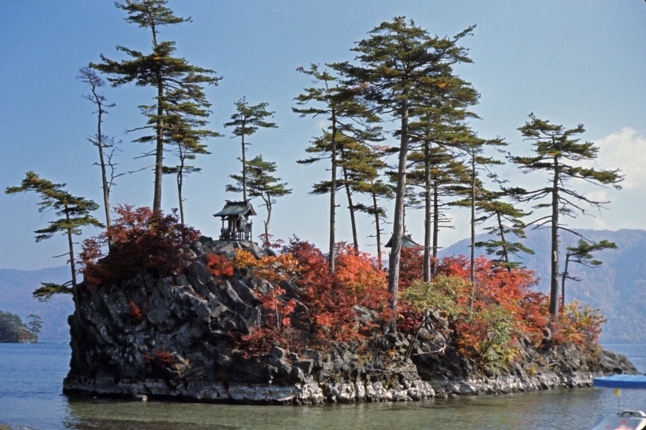 The Towada area is famous for Towada-ko (Lake Towada), the largest crater lake in Japan, and Oirase river, which are popular tourist destinations. Until 2012, a private railway linked Misawa and the city of Towada. (Admin Note: When I served in Hachinohe in 1975, we traveled this way to look up referrals in Towada.)
The Towada area is famous for Towada-ko (Lake Towada), the largest crater lake in Japan, and Oirase river, which are popular tourist destinations. Until 2012, a private railway linked Misawa and the city of Towada. (Admin Note: When I served in Hachinohe in 1975, we traveled this way to look up referrals in Towada.)
Historic Towada
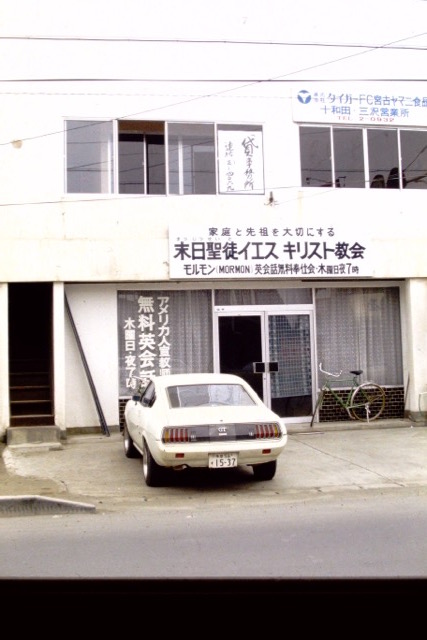 Towada's first meetinghouse (Inaoi Cho 3-4) (street view, embedded map) and history, courtesy Stuart McHardy (79-81): "The city was opened for missionaries in 1979. By the time I arrived in May 1980, there were 3 members, all young singles. We were also covering Misawa at that time - all four elders would ride our bikes over to Misawa (14km) on Thursdays as a district and would tract through the day, and meet at a local supermarket at a soba counter for dinner. We would continue to tract into the evening and ride home in the dark (checking each other and picking the mosquitoes out of our teeth). The local densha (the Green Worm) provided alternate transportation opportunities, as needed, though we were on foot once arriving at the Misawa eki, with a steady uphill hike to get to the base or town proper. We knew of no Japanese members living in Misawa or converts from Misawa into late 1980. We had four (4) baptisms that summer, the first two of which were performed in the Oirase River."
Towada's first meetinghouse (Inaoi Cho 3-4) (street view, embedded map) and history, courtesy Stuart McHardy (79-81): "The city was opened for missionaries in 1979. By the time I arrived in May 1980, there were 3 members, all young singles. We were also covering Misawa at that time - all four elders would ride our bikes over to Misawa (14km) on Thursdays as a district and would tract through the day, and meet at a local supermarket at a soba counter for dinner. We would continue to tract into the evening and ride home in the dark (checking each other and picking the mosquitoes out of our teeth). The local densha (the Green Worm) provided alternate transportation opportunities, as needed, though we were on foot once arriving at the Misawa eki, with a steady uphill hike to get to the base or town proper. We knew of no Japanese members living in Misawa or converts from Misawa into late 1980. We had four (4) baptisms that summer, the first two of which were performed in the Oirase River."
